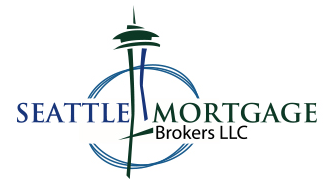It's February - Winter In Full Swing Winter is only halfway done, which means it…
Setting Smart Goals
What is a financial goal and how many of us actually sit down to create one for ourselves? While you take this time to think of ways to organize and clean out your home, mind and body, also take a minute to reflect on how you would like your finances to work for you. When creating a financial goal, and thinking of what you want your financial future to look like, a good start is to understand the SMART goal technique.
SMART goals are goals that embody five distinct traits:
S = Specific: Your financial goals should be as specific as possible in order to successfully achieve exactly what you want. Always include as much detail as possible. What am I striving for? How will I achieve it? Who does it involve? Why is it important to me? If getting out of debt is important to you, think about what debt you want to tackle. Is it credit card debt or student loans? Pick one and focus on that for your goal.
M = Measurable: For a goal to be effective, it must be measurable. Define how much you will achieve by accomplishing this goal. A goal to “make a lot of money” is not helpful because you can’t measure “a lot.” Let’s look at getting out of credit card debt. What does that mean to you and what does it look like? Saying “I want to reduce my credit card debt by $3,000” is a start to being measurable. How will you accomplish paying down that debt? Do you just “put a little extra in every month when I have that money?” Unfortunately, that may not work very well. You need to be specific and you need to be able to measure it. Figure out exactly how much extra you can pay every month towards your debt. Now you have a concrete figure. You know you need this amount every month. You can now work on ways to make sure you have this much to pay off your debt. This also breaks down your goal of paying your credit card debt into smaller goals that you can attain on a measurable frame. Now, you aren’t focused on paying off all your credit card debt, which can feel overwhelming. You are viewing it as paying off a specific, measurable amount each month.
A = Attainable: A big mistake we often make with goals, and one of the main reasons why we may fail to meet goals, is because we shoot for the moon with a goal we can’t reasonably achieve. As you are creating your financial goal, ask yourself, “can I actually do this…is it possible?” If you have made your goal specific and measurable, it should help in determining if your goal is attainable. It’s also okay if your goal may seem slightly out of reach. That’s the great thing with goals. We can always adjust them if we need to. The point is that you are working toward something. Making a goal too easy to achieve means you aren’t growing and changing something about yourself. Sometimes, we have to stretch and struggle to reach that goal. It can help you to be more of who you want to be rather than who you have been. If your goal is to pay down credit card debt, challenge yourself to rework your budget to be able to put that money toward your goal.
R = Realistic: Setting realistic goals involves the methods we intend to use to achieve our goals. An example of a realistic goal might be, “I want to pay off my credit card debt of $3,000 by paying $300 a month for the next ten months.” Is the $300 something you can work into your budget for putting toward that goal? A realistic goal must be in the realm of possibility for you.
T = Time-Bound: This last element of SMART financial goals is really important. Effective goals are time-bound or timely. What does that mean? It means your goal will have a starting point, an end point and measurable time or milestones in between. Making your goal time-bound provides a framework for you to work within.
Time makes your goal more SPECIFIC: “I’ll eliminate my credit card debt in ten months.” Time makes your goal more MEASURABLE: “I’ll put X dollars away every Sunday and then pay N dollars on the 15th of the month toward my credit card bill.” Time makes your goal ATTAINABLE: “I can’t pay $3,000 in two months toward my credit card debt, but I can afford $300 a month to put toward it.” Time makes your goal REALISTIC: “Is the time needed to attain this goal really the best use of time for me?”
*This article does not represent legal interpretation or advice. This is not a commitment to make a loan. Loans are subject to borrower qualifications, including income, property evaluation, sufficient equity in the home to meet LTV requirements, and final credit approval. Approvals are subject to underwriting guidelines, interest rates, and program guidelines, and are subject to change without notice based on applicant’s eligibility and market conditions. Refinancing an existing loan may result in total finance charges being higher over life of loan. Reduction in payments may reflect longer loan term. Terms of the loan may be subject to payment of points and fees by the applicant. NMLS: LO# 305371 MB# 761615


